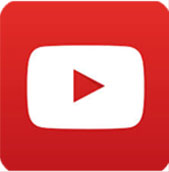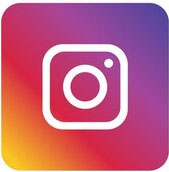
Student Tips for Getting Started on Your Documentary

Ella-Grace Rodriguez, a 3-time C-SPAN StudentCam prize winner who is now a film director and USC film school graduate, made a series of tutorials designed to help you through the process of making a StudentCam documentary.
In the video series below, Ella-Grace shares her experiences creating her own prize-winning StudentCam documentaries, as well as tips on how you too can choose to approach the various aspects of your video production, including planning, shooting, and editing your documentary.
Additional Tips for Getting Started
 Clifton Raphael, a former video production teacher at Jenks High School in Oklahoma, shares a series of video tutorials featuring testimony from his students who also had first-hand experience creating winning documentaries in past StudentCam competitions.
Clifton Raphael, a former video production teacher at Jenks High School in Oklahoma, shares a series of video tutorials featuring testimony from his students who also had first-hand experience creating winning documentaries in past StudentCam competitions.
Mr. Raphael also shared the following document which covers some of the basic technical considerations for framing your interviews and other shots on camera.
HANDOUT: Essential Elements in Documentary Filmmaking (Google Doc)
Additional Resources to Consider
Free B-Roll Footage
- 24 Websites to Find Affordable or Free B-Roll Footage (StudioBinder)
- Where to Find Free Cinematic B-Roll (Medium)
Free Video Editing Software
- The best free video editing software (CreativeBloq.com)
- WeVideo.com (Cloud-based Video Editing Platform)
- DaVinci Resolve (Cloud-based Video Editing Platform)
Fair Use Laws
- Documentary Filmmakers’ Best Practices in Fair Use (American University Center for Media and Social Impact)
Frequently asked questions
Students may enter the competition individually, or work in teams of either 2 or 3 students. If an entry is awarded a prize in the competition, the money will be split evenly among team members. A single entry that is created by more than 3 students will be disqualified from prize contention.
Click here for a printable Student Checklist before submitting your documentary. (Google Doc)
Each student documentary MUST include the following five elements:
- A complete exploration of their chosen topic
- Inclusion of C-SPAN programming relating to their documentary’s topic (we recommend using several short clips of C-SPAN programming)
- A balanced presentation of varying viewpoints (we recommend that students interview topic experts, elected officials and people directly impacted by their chosen topic)
- Adherence to the documentary time limit of 5:00 to 6:00 minutes. (End credits, if applicable, must begin after the minimum documentary duration of 5:00 minutes but are permitted to run longer than the maximum documentary duration of 6:00 minutes)
- Credits at the end of their documentary or a works cited list
Student documentaries MAY include, but are not required to include:
- Additional video pertaining to their topic (B-roll footage)
- Music (preferably copyright free music)
- Graphics
- Diagrams
- Still images
- Narration (Note: If students narrate their documentary, they must write their own script to avoid plagiarism. They may use online or print sources, but they have to put any information used in their own words.)
HOW LONG WILL IT TAKE TO MAKE MY DOCUMENTARY?
We suggest you plan to dedicate several weeks to creating your documentary. Below is a suggested time frame for those who may wish to go above and beyond. Please keep in mind that several of these steps will overlap as you go through the process of producing your documentary.
- Topic Selection and Initial Research: (1 week)
- Research and Scheduling Interviews: (2 weeks)
- Conducting Interviews & Shooting B-Roll: (2 weeks)
- Write your Script: (1 week)
- Build your Rough Cut: (1 week)
– Edit interviews
– Find & download relevant C-SPAN clips
– Record Narration
– Add in music, transitions, text and title slides and credits - Share with friends and family and ask for their critique, make final edits and submit to StudentCam: (1 week)
Click here for a printable Student Checklist (Google Doc)
It is perfectly fine for you to use A.I. tools to brainstorm ideas and start to gather general information about your topic — just make sure that you double-check the facts yourself and make sure that you put the information in your own words unless you are directly quoting and citing your sourced information.
You should not be using Artificial Intelligence to create or edit your entire documentary. As judges we are most interested in your own verified research and your presentation of the facts, opinions and stories related to your topic. Secondary consideration is given to the overall technical aspects of your work.
You should not be paying money to download any C-SPAN footage for use in your StudentCam documentary.
Clips from many of the programs in C-SPAN’s extensive archives are available as FREE downloads in MP4 format on our C-SPAN Downloads page.
We recommend that you look for clips of C-SPAN programming that both support and oppose your own viewpoints. If you scroll down our Downloads page you’ll see that we frequently update a large list of ready to download C-SPAN clips on a variety of topics that may be downloaded and used in your documentary.
Don’t see your topic represented or you need assistance downloading clips? Simply email us at educate@c-span.org.
Another option worth exploring is using screen capture software. Many Mac computers have screen capture software included in their pre-packaged software bundles. Other screen capture programs, like Camtasia, offer free trial periods lasting up to 30 days. Use your screen capture software in conjunction with C-SPAN’s streaming Video Library to capture C-SPAN video for use in your documentary.
If you have contacted C-SPAN’s Education team and you are still unable to download video, you may wish to stream video from C-SPAN’s Video Library, point your phone or video camera at the computer screen, and record the portion of the program that you would like to use. This may not result in the highest quality video, but it is always an option if you are pressed for time or unable to download the other provided options of C-SPAN video.
Remember to keep the camera steady (consider using a tripod if available), adjust the lighting, and check the recorded volume levels if you choose to capture video this way. This will ensure that you get the best quality video possible using this method.
There is no set time requirement for your C-SPAN clips but the inclusion of C-SPAN programming should be used to support your documentary and complement your overall presentation. Preview some of our past winning videos to get an idea of how you too can use short C-SPAN clips to provide additional perspective and enhance your documentary. We recommend that you use multiple short video clips, but each individual C-SPAN clip used should be no longer than 15-20 seconds. If using multiple C-SPAN clips you may choose to stagger them intermittently throughout your documentary, or have several short clips play consecutively in a row.
C-SPAN produced programming is copyright cleared for use in educational applications like StudentCam. You may use clips from any of our programs in your documentary, including C-SPAN’s programs like Washington Journal, American History TV and BookTV.
C-SPAN’s philosophy is to always show multiple perspectives and points of view on any issue that we cover as a television network. Students should treat their documentary in a similar fashion, providing comprehensive overview of their topic and an exploration of the differing points of view, including those that you may personally disagree with.
If you are comfortable sharing your own point of view about your chosen issue, you are welcome to do so. You may also consider sharing at the end of your production whether your views have changed or solidified though out the process of researching your documentary.
In order to present varying opinions about your documentary’s issue, you may also want to interview people who have differing points of view on your chosen issue. You could also choose to explore how your issue may affect different groups of people in different ways.
Another way you can show varying points of view on your topic is through the use of clips from C-SPAN of various officials and experts with juxtaposing viewpoints.
There are no requirements for who should be interviewed in your documentary but we strongly encourage students to consider interviewing experts on their chosen topic, as well as local and national political leaders. Consider interviewing people who may have been impacted by the topic you are researching, as well as people who work in related fields, activists, university professors, historians, and local, state and federal officials officials who may be involved in related legislation and policy.
Your goal is to provide a well-rounded look at your chosen topic so consider interviewing people who may have alternative points of view.
We suggest contacting potential interview subjects (or their assistants) via phone or email. You may also consider using social media sites like Twitter or LinkedIn to request a short interview. We recommend that you cast a wide net and be persistent when soliciting interviews. It never hurts to ask and you may be surprised by who is willing to sit down with you for an interview! These interviews can add credibility to your work and they are one of the clearest ways to help set your work apart from other documentaries in the competition.
You may also consider searching your topic in C-SPAN’s video library to see who has appeared on our network previously and discussed your issue. Search for their contact information on the internet, reach out to them and mention that you have seen them on C-SPAN and that you are working on a documentary for the C-SPAN’s StudentCam competition. Let them know you are interested in speaking with them for your documentary and ask for 5-10 minutes of their time to discuss your topic. You can search our archives here: https://www.c-span.org/search
When contacting potential interview subjects, consider sharing this document with them which provides an overview of the competition:
StudentCam Competition Overview for Interview Subjects (Google Doc)
A majority of students simply use their cell phones or tablets to produce their StudentCam documentaries.
Alternatively (or in addition to), if there are video cameras and/or editing equipment available at the school or in the library, consider requesting access from your teachers or administration.
If you are unable to use your phone or school equipment, you can also try contacting public libraries in your area to see if they may have equipment to lend to you.
You can also try your local cable affiliate, local television stations or local public access channel.
With all of that said, many cell phones and digital cameras are able to record video of increasingly high quality. There are also many free video editing apps that are available for smartphones and devices that are worth exploring.
Judging will take place in C-SPAN’s offices in Washington, DC from January through March.
As an amateur video competition, the judges’ strongest critiques center primarily on the content, research, and presentation of each documentary. We are most interested in your original work and the presentation of information within your documentary. Secondary consideration is given to the technical aspects like editing and video quality. While the technical aspects of their video are important, we also realize that this may be the first time you have created a video, and that your access to technology may be limited. We encourage you to participate regardless of past filmmaking experience and it is important to note that numerous top prize winning videos each year are made by students with no prior video editing experience.
Entries will be judged on the following criteria:
- Complete exploration of the chosen topic, and its relation to the contest’s theme
- Quality of expression and your creativity
- Inclusion of topically relevant C-SPAN programming
- Thorough exploration of the varying points related to your chosen topic (including opposing viewpoints, where applicable)
Entries must be uploaded by 11:59pm Pacific Standard Time at the end of the day on January 20, 2026.
Once you have completed your video, you must first upload it to a video host such as YouTube, Google Drive, DropBox or WeVideo.
You then copy and paste the link for us to view and judge your video when you submit your Entry Form.
**PLEASE NOTE:** Your video must be either marked as “Unlisted” or “Public” on YouTube, or marked as “Anyone who has the link can view” in Google Drive. Videos that are marked “Private” on any platform will not be able to be viewed or judged by C-SPAN staff. If you are using your school district’s Google account, please ensure that your videos can be viewed by accounts that are outside of your school district.
You DO NOT need to provide any prior notice of your intention to enter. The only requirement is that your video and Entry Form is submitted online by the deadline, which is 11:59pm Pacific Standard Time at the end of the day on January 20, 2026.
The 150 winning videos will be announced on the StudentCam website in March 2026. Winning students and teachers will be notified via email.
If you have further questions, please contact C-SPAN’s Education team at educate@c-span.org or call our Washington, DC office at 202-626-4858 between 9:00am-4:00pm ET.
The Format
The contest calls for a specific format for your video--a documentary. Your StudentCam documentary could be described as a visual essay. The video elements (content, editing, voiceover, B-roll, music, graphics) should be combined to thoroughly explore your chosen topic. You may include elements of entertainment but the end product should tell a non-fiction story.
Team Work
Before you get started, if you are working in a team, you should consider how the team is going to divide up the responsibilities.
Typical roles may include: writer, interviewer, director, videographer, narrator, and editor. Of course, one person can play more than one role.
Research
Research facts and leading political opinions on your topic. Brainstorm a list of potential interviewees and contact them via phone, email or social media to schedule interviews. Explore locations and events that you may want to include as supporting footage to further illustrate your topic. Organize your information and properly cite your sources. Be consistent in your citation format.
Treatment
At this stage you may wish to write a "treatment"--a one-two paragraph synopsis of your documentary's topic and what you expect the audience to take away from viewing your work.
You can refer to the treatment throughout the production process to keep the project focused.
Outline the Content
Before production, you may wish to create a script outline, including storyboards illustrating specific shots that you plan to include. You may wish to list: related locales to explore and include in your footage, people you hope to interview, related events like a festival, march or a public meeting that you may want to include in your footage, documents, charts, graphs, or still photos to include, C-SPAN video clips you may want to include. **Be sure that any copyrighted material is used sparingly and adheres to "fair" use guidelines.
Video Equipment
Many students simply use the camera on their cell phones but if you do not have video equipment readily available, consider asking your school or public library, your school district's technology department, your local cable provider (try their community relations or public affairs divisions), or your local public access channel for help with resources.
Shooting Video
There are some basic rules to follow when shooting video for use in your documentary. You should consider lighting, framing, positioning, camera steadiness, speed of camera movement, sound, how many seconds you hold on a shot, etc. A note about interviewing--think carefully about the questions and answers, the preparation, position, location and appearance of the interviewee. Careful planning can lead to better video recording for use in your documentary.
Editing
Editing is a critical phase of creating your video. Think of the editing process as similar to the writing process, and your finished documentary as the words you will use to tell your story. In what order will you arrange the story? What pieces work well together? What pieces should be left out? How will it end? You may also realize you are missing some pieces and need to shoot more video. Determine your strategy of transitioning between scenes and which segments need voice-over narration.
Feedback
Before you submit your video, ask your friends, family members, or teachers to watch your video and give you constructive feedback about what works well and what they think needs improvement.
Make those final adjustments before you submit your video to the competition.



